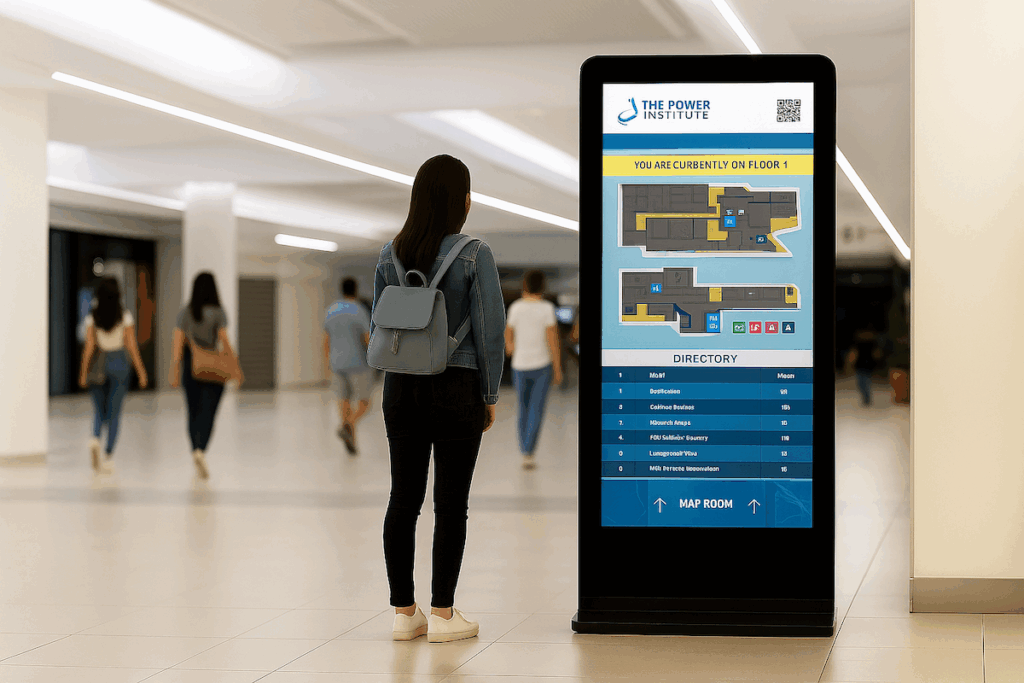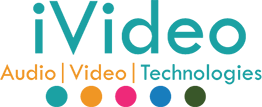
The ROI of Digital Signage in Retail and Corporate Environments
Breaking down the stats and real-world examples that show cost-effectiveness and engagement of digital signage
In today’s digital-first world, static signage no longer cuts it. Digital signage has emerged as a powerful tool that delivers dynamic content, drives measurable results, and scales across industries—from retail and restaurants to corporate offices and healthcare facilities. But what really matters is the ROI of digital signage. From increased sales and reduced costs to improved engagement and efficiency, the long-term benefits make it more than worth the investment.
Key Takeaways
- Retailers see up to 32% sales growth and 35% cost reduction
- Corporate use shows 22–27% increased employee engagement
- Statistically, 55–83% of viewers notice or recall digital ads
- Costs drop by 30–50% compared to print signage
- ROI is achieved in as little as 18 months in sectors like quick-service and banking
- Real-world examples: McDonald’s drive-thru efficiency, banks’ customer outreach, educational way-finding
1. Boosting Sales & Impulse Purchases in Retail
Retail environments leveraging digital signage see compelling results:
- A case study reported by AIScreen showed a 25% sales increase and 40% rise in customer engagement from strategically placed displays
- The Retail Digital Signage Report 2023 found a 32% sales boost, a 55% higher ad recall, and 83% engagement among retailers
- A Mood Media survey noted 58% of shoppers notice displays, with nearly half saying it influenced their purchases
- In quick-service restaurants, digital menu boards drive up to 20% of order volume, with 30–50% savings in print costs
Takeaway: Retailers benefit immediately from retail digital signage through sales growth, lower costs, and stronger shopper engagement.
2. Cutting Costs on Print & Labor
Switching from print to digital signage saves significantly:
- Retailers report 30–35% lower advertising costs compared to traditional print
- A report shows up to 50% cost savings from reduced production and labor
Takeaway: The cost-effectiveness of digital signage makes it an economical long-term communication strategy.
3. Capturing Attention with High Recall Rates
Digital is memory-worthy:
- Recall rates soar to 83% for viewers of digital ads, far outperforming print
- 71% of consumers say digital signage stands out more than online ads
- Digital signage captures 400% more attention than static displays
Takeaway: Interactive displays and video content drive stronger brand recognition and recall.
4. Enhancing Engagement & Experience
Beyond ads, digital signage supports interactive engagement:
- Interactive touchscreens increase shopper engagement by up to 33%
- In banking environments, 60% of institutions use digital signage, with payback in under 18 months
- Corporate adoption boosts employee engagement by 27%, and in manufacturing, engagement improves 22%, reducing defects by 41%
Takeaway: Digital signage fosters corporate engagement and enhances internal communication.
5. Real-World Case Studies
McDonald’s: Digital menu boards improved order accuracy, boosted upsells, and became central to their “Experience of the Future” redesign.
Banks: One bank reported a 10% increase in new account openings due to in-branch digital signage ; 95% of banks see ROI within 18 months
Educational Institutions: Digital signage use has risen to 73%, increasing event participation by 68%.
6. Beyond Retail: Corporate & Public Use
Digital signage also thrives in non-retail sectors:
- In healthcare, 36% reduction in perceived wait time and a 22% drop in missed appointments
- Corporate workplaces see 27% engagement gains
- Public venues (airports, stations) benefit from instant updates—10% public recall vs 41% social media reach.
Takeaway: Digital signage delivers value across sectors—from corporate messaging to patient care and way-finding.
7. Measuring ROI: Cost, Engagement & Outcomes
Tracking ROI of digital signage is essential:
- Set clear objectives (e.g., drive sales, improve engagement, reduce wait times)
- Monitor KPIs: impressions, dwell time, conversions, cost per acquisition
- Mix quantitative (sales data) and qualitative (surveys, sentiment) insights.
Takeaway: Measuring results anchors digital signage in data-backed decision-making.
8. Tech Trends Driving ROI
Key tech innovations enhancing value:
- Cloud-based CMS enables remote updates and scheduling
- AI/personalization increase impact via targeted messaging and interactivity
- Interactive touch and gesture lower friction and heighten engagement by 33%
9. How to Maximize ROI
- Align with goals—define KPIs upfront
- Strategic placement—checkout, entrances, high dwell zones
- Update frequently—on-schedule content keeps attention
- Leverage interactivity—polls, menus, wayfinding
- Analyze & optimize—use dashboards and analytics to improve impact
10. Partner with Experts: iVideo Technologies
At iVideo, we combine industry-grade hardware, cloud CMS, analytics, and bespoke content strategy to build digital signage systems with measurable outcomes. Our solutions—interactive kiosks, LED walls, wayfinding systems, and content updates—are tailored to drive results.
Final Thoughts
The ROI of digital signage transcends cost reduction—it drives revenue, engagement, efficiency, and experience across retail and corporate environments. With data-backed insights, real-world case studies, and modern tech, digital signage offers a high-impact, scalable tool for any organization.
Ready to amplify your communication and ROI?
Contact iVideo Technologies today to design a digital signage strategy that transforms spaces and delivers measurable success.
